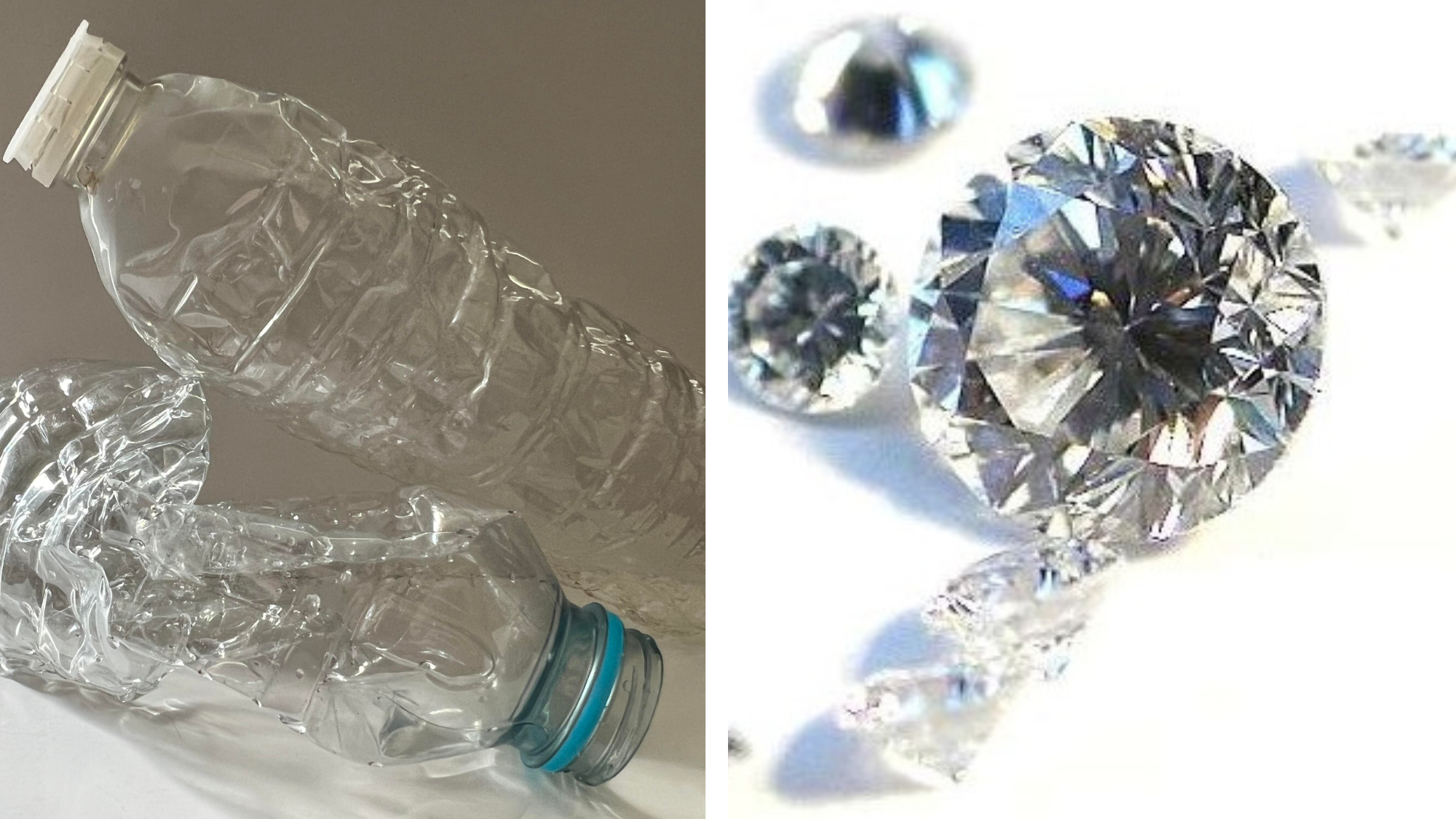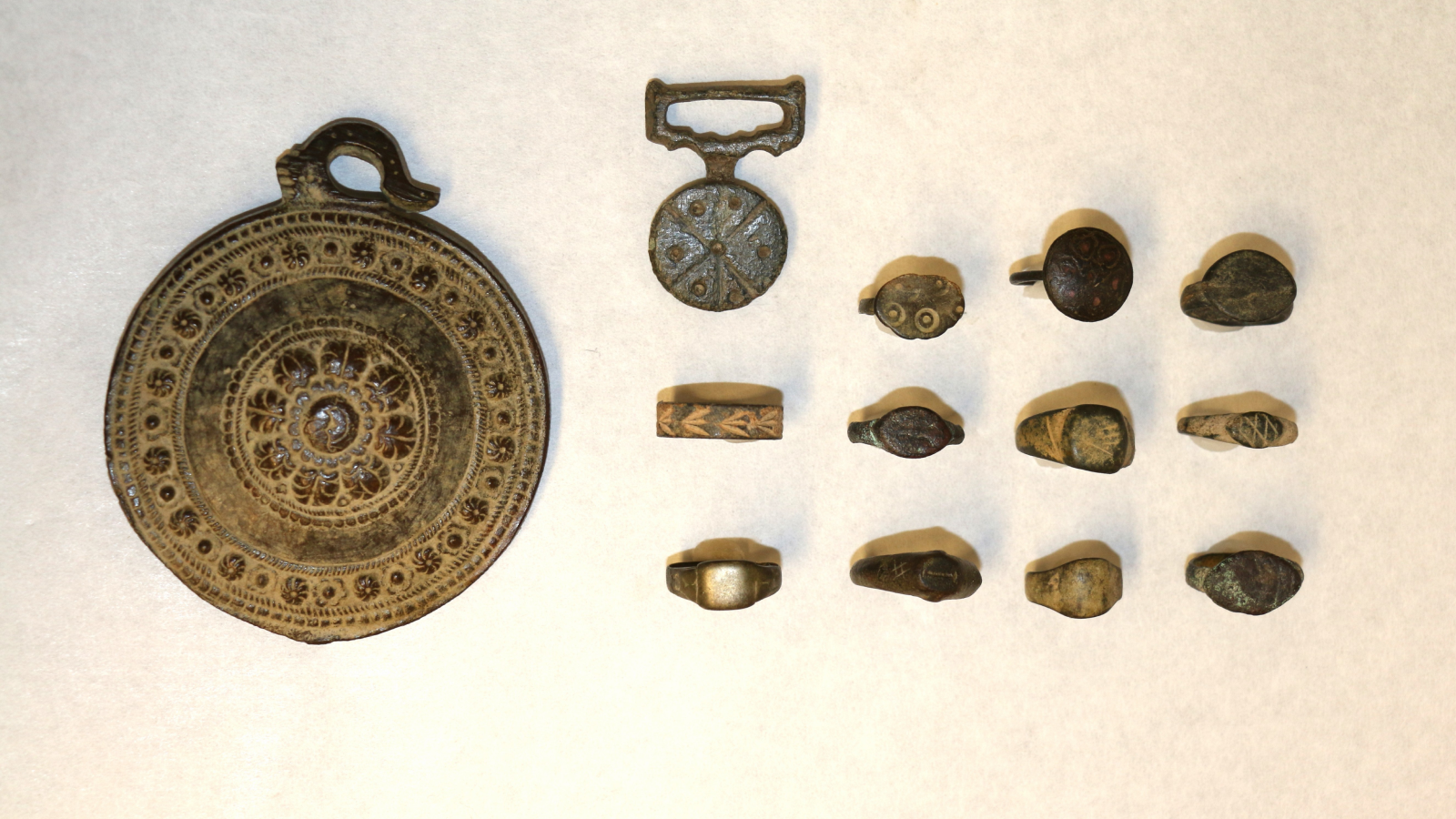Scientists blasted plastic with lasers and turned it into tiny diamonds and a new type of water
New research inspired by ice giants like Neptune and Uranus shows lasers can transform a common plastic into tiny diamonds.

Using ultrapowerful lasers, scientists have blasted cheap plastic and transformed it into tiny "nanodiamonds" — and, in doing so, confirmed the existence of an exotic new type of water. .
The findings could potentially reveal the existence of diamond rain on ice giants in our solar system and explain why these frigid worlds have such strange magnetic fields. The laser-blasting technique could also lead to more Earthly applications.
Nanodiamonds are diamonds that measure just a few nanometers, or billionths of a meter. They have both existing and potential applications, such as turning carbon dioxide into other gases and delivering drugs into the body, study co-author Dominik Kraus, a physicist at Helmholtz-Zentrum Dresden-Rossendorf in Germany, told Live Science.
"Nanodiamonds could also be used as ultrasmall and very precise quantum sensors for temperature and magnetic fields, which may result in a plethora of applications," Kraus said.
The technique could also reduce plastic pollution by creating a financial incentive to clear and transform plastics from the ocean, he said.
An experiment with cool implications for ice giant planets
For many years, planetary scientists have suspected that diamonds form within the frigid interiors of ice giants such as Neptune and Uranus.
If these diamonds do form, they would then "rain" through the interiors of these frozen worlds.
Get the world’s most fascinating discoveries delivered straight to your inbox.
To see whether this process was feasible, the researchers took a sheet of polyethylene terephthalate (PET) plastic — the type found in plastic bottles — and used a high-powered optical laser found at the Matter in Extreme Conditions instrument in the SLAC National Accelerator Laboratory's Linac Coherent Light Source to heat the plastic to around 10,000 degrees Fahrenheit (6,000 degrees Celsius).
This created pressures millions of times greater than that of Earth's atmosphere for just billionths of a second. This bone-crushing pressure shocked the plastic, causing the carbon atoms in the plastic to reconfigure into a crystalline structure, with hydrogen and oxygen drifting through this lattice.
"Using a powerful X-ray laser, we could look inside the sample and create movies of the chemical reactions happening there," Kraus said. "We saw very efficient formation of nanodiamonds inside the compressed plastics within the timescale of our experiments — just a few nanoseconds."

The new research shows that this type of diamond formation may be more common than scientists previously believed, raising the chances that ice giants may sport thick layers of diamonds around their solid cores.
The experiment also strongly suggests that at the high temperatures and pressures found in the interiors of such icy worlds, an exotic state of water, called superionic water ice, emerges.
This strange form of water allows protons to move through a lattice of oxygen atoms. If such superionic water exists on ice giants such as Uranus and Neptune, the movement of protons through this exotic type of matter may help generate the peculiar magnetic fields observed on those planets, Kraus said.
Past calculations suggested that the carbon atoms likely found in planetary interiors would make any superionic water that formed there extremely unstable.
But "our experiments now show that carbon and water are demixing [the unintended separation of the substances in a mixture] via diamond formation," Kraus said. "Thus, isolated water can be present inside the planets, which makes the formation of superionic water more likely."
And it may soon be possible for a spacecraft to visit our icy neighbors to see whether diamond rain and exotic water actually exist there.
"Hopefully within the next decade, a new NASA space probe will be launched to Uranus, as just defined as the highest priority by the decadal survey," Kraus said.
The findings could also have more commercial applications. Right now, people make nanodiamonds by detonating carbon or blasting larger diamonds to bits with explosives, creating a hodgepodge of different-size diamonds. The new method would be a cleaner way to make diamonds of specific sizes, Kraus said.
The team's research was published Sept. 2 in the journal Science Advances.
Originally published on Live Science.
Robert Lea is a science journalist in the U.K. who specializes in science, space, physics, astronomy, astrophysics, cosmology, quantum mechanics and technology. Rob's articles have been published in Physics World, New Scientist, Astronomy Magazine, All About Space and ZME Science. He also writes about science communication for Elsevier and the European Journal of Physics. Rob holds a bachelor of science degree in physics and astronomy from the U.K.’s Open University



